On Tour:
Sampling German Specialties

One of the best parts of traveling is sampling the local cuisine, and Germany is no exception.
In addition to the country’s famous alpine peaks and Bavarian castles, you’ll discover an array of culinary specialties and traditional dishes, including meats like bratwursts, side dishes such as potato salad and sauerkraut, and desserts like apple strudel.
German cuisine offers a wide array of flavors and dishes that reflect the country’s regional diversity. From the hearty, meaty dishes of Bavaria to the fresh seafood of the northern coast, each region has its own unique specialties. In the south, you'll find dishes rich in pasta and dairy, reflecting historical ties to Italy and Switzerland. Meanwhile, the central part of Germany is known for its bread, sausages, and potato dishes, often accompanied by a robust selection of beers from local breweries.
Keep reading for a comprehensive look at what to expect when eating out in Germany and helpful tips and foods to try on your tour of Germany.
Dining out in Germany: What to Know
Whether you're sitting in a cozy beer garden in Bavaria, a traditional "Kneipe" (pub) in Berlin, or a sophisticated restaurant in Hamburg, the emphasis is always on Gemütlichkeit—a sense of warmth, friendliness, and good cheer. Dining out in Germany is an experience that extends beyond just the food. It's about tradition, quality, and enjoying the moment.
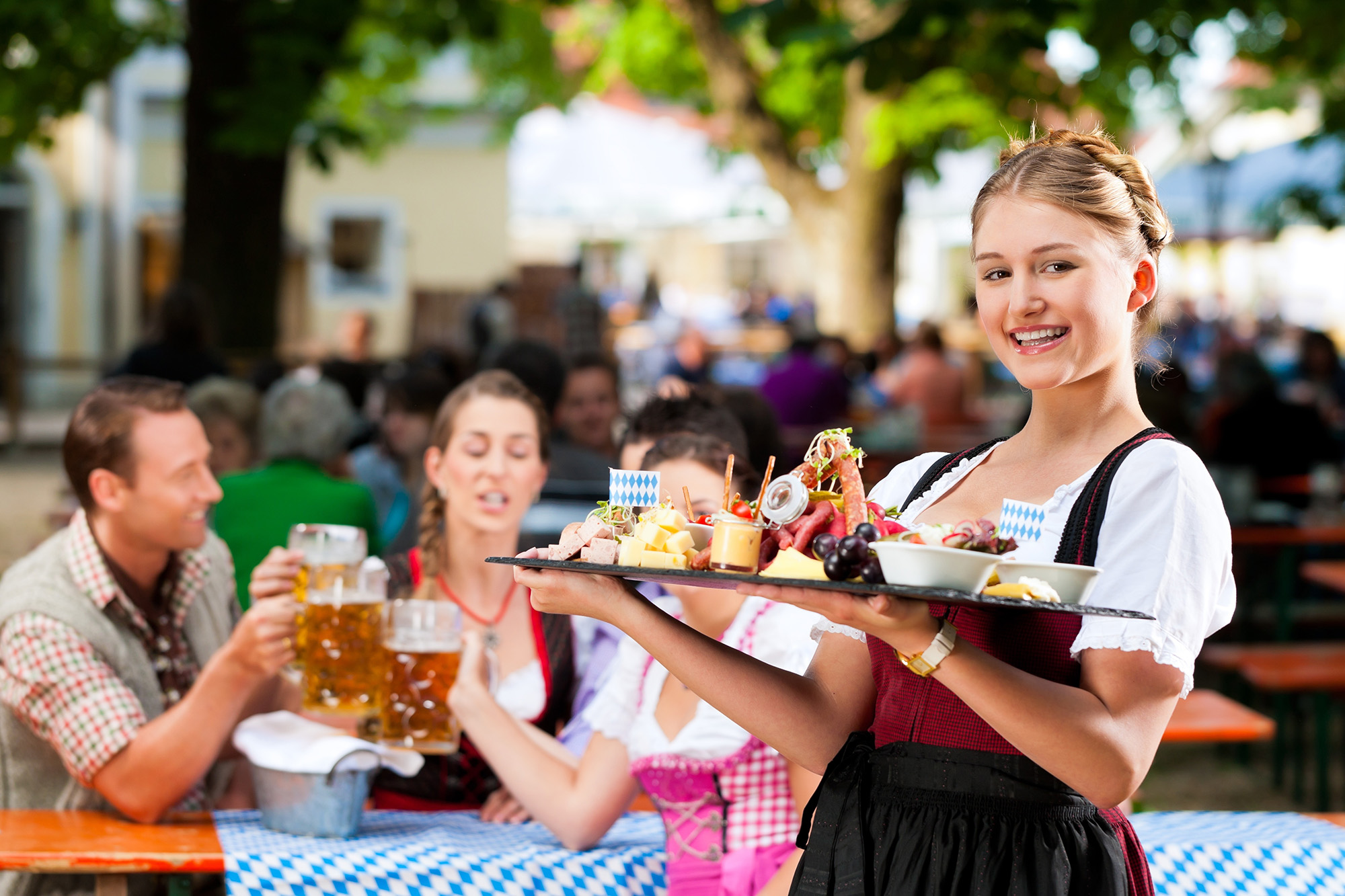
Before stepping into a German restaurant or café, it's helpful to know that the pace of dining tends to be leisurely, with emphasis on enjoying the meal and the company. Tipping, while not mandatory, is customary and appreciated, usually around 5-10% of the bill for good service.
Expect to find a wide variety of dishes influenced by regional specialties, from hearty meats and sausages in Bavaria to fresh seafood along the northern coasts. Vegetarian and vegan options are increasingly available, especially in larger cities. Traditional German eateries, known as "Gasthäuser" or "Gaststätten," offer a warm, welcoming atmosphere, often with a selection of local beers to complement your meal.
You’ll notice more people eating with flatware than with their fingers in Germany, even when it comes to things like French fries that most Americans consider to be finger foods.
Unlike most places in the US, water and bread are usually not complimentary and can be ordered or requested. Germans are also conservative at the table, meaning if you want ice in your drink, be prepared to ask for it.
Remember, when toasting with your companions, it's customary to make eye contact and say "Prost!" as a sign of respect and camaraderie. Dining out in Germany is not just about the food; it's about embracing a moment of cultural and culinary connection.
What to Eat & Food to Try in Germany
Exploring German cuisine is a journey through the country’s culture, history, and regional diversity. It’s a chance to appreciate the craftsmanship behind each dish, from the selection of ingredients to the methods of preparation. Whether you're indulging in a sumptuous slice of Sacher Torte, savoring a crispy schnitzel, or enjoying a simple yet delicious pretzel, the flavors of Germany are sure to leave a lasting impression. Here are some things you can sink your teeth into while visiting Germany on a guided tour.
Meats to Try in Germany
Meat reigns supreme in Germany and is consumed at nearly every meal. Two mainstays are pork and chicken. Of course, a hearty stroganoff, another German classic, typically features a beef offering, but in general, plan on white meats. Of course, nothing tops the variety of sausages that Germany is famous for. Here are some meat specialties not to miss:
Bratwursts – It doesn’t get more traditional than this. Usually a savory spiced mix of veal, pork, beef or all three- a bratwurst or two is simply a must when traveling through Germany. Tried with French fried potatoes!
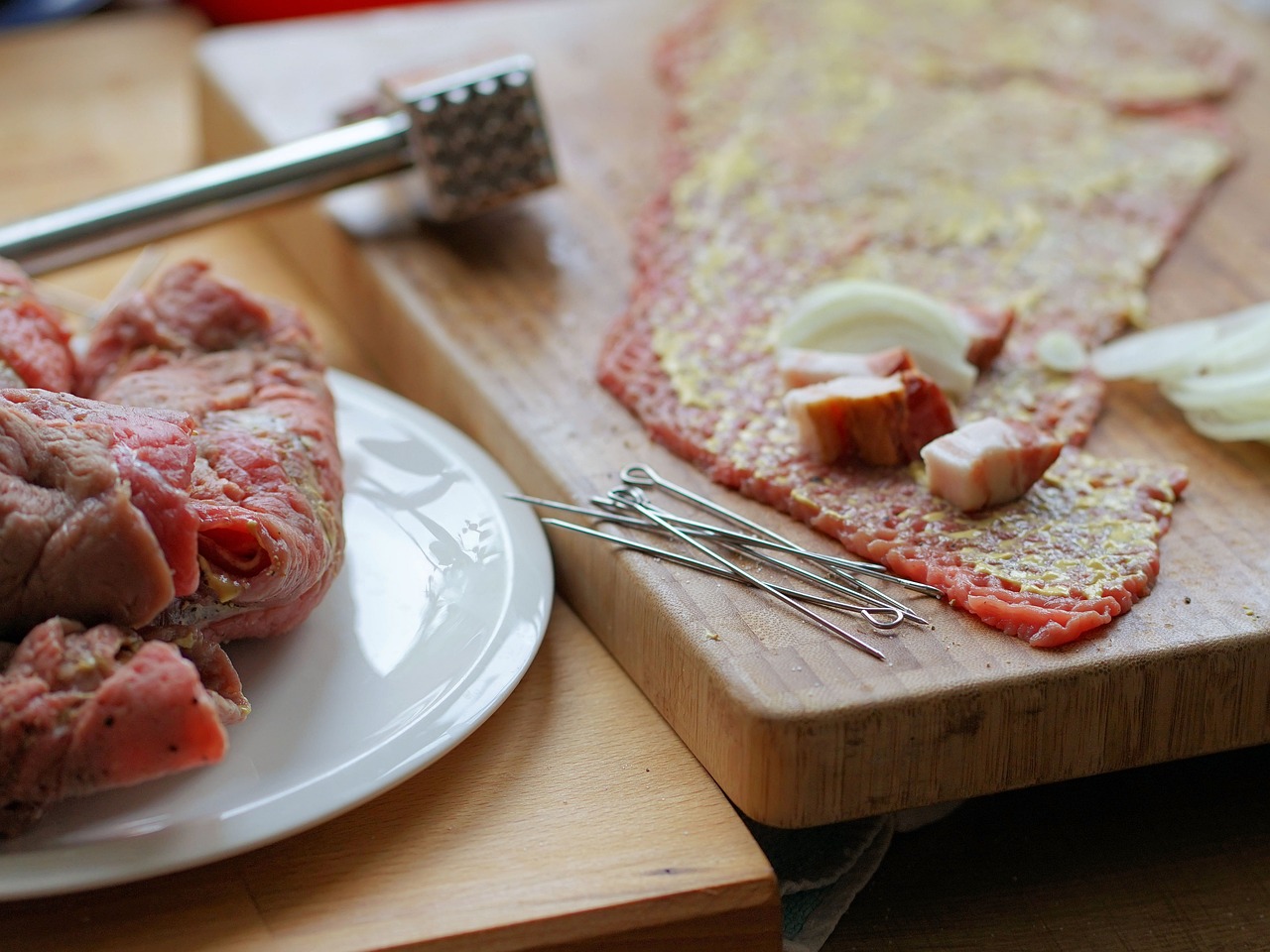
Rouladen - a traditional German dish that embodies the rich, hearty flavors of the country's cuisine. It consists of thinly sliced beef rolled around a filling of bacon, onions, mustard, and pickles. These rolls are then browned, slowly cooked in a broth until tender, and often served with a savory gravy. The dish is typically accompanied by mashed potatoes, red cabbage, or Spätzle, making for a fulfilling and comforting meal.
Why You Should Try Rouladen in Germany
Rouladen is a perfect example of German culinary artistry, showcasing the skillful use of simple ingredients to create rich, complex flavors. It's a window into the country's culinary traditions and regional variations. Experiencing Rouladen in its country of origin offers a taste of the dish as it was meant to be enjoyed. The traditional recipes, passed down through generations, provide a depth of flavor and authenticity that is difficult to replicate outside of Germany. Dining on Rouladen offers more than just a meal; it's a dive into German culture. This dish is often reserved for special occasions and family gatherings, making it a celebratory food that brings people together. For food enthusiasts and travelers alike, Rouladen is a must-try dish that offers not only a taste of German cuisine but also a piece of German culture and tradition.
Schnitzel – Though not exclusively German, the schnitzel in Germany, particularly the Wiener Art (veal or pork), breaded and fried, is a classic dish.
Sauerbraten – This marinated roast beef dish is a traditional German comfort food, known for its tender texture and rich flavors.
Hendyl - Imagine a whole chicken, grilled and marinated in traditional spices. This is also called chicken broiler, mainly in the eastern parts of Germany. Other meats, like pig and goose, are also prepared in this fashion for larger gatherings.
Meatballs - They’re not just for the Swedes and Italians! German meatballs are often cooked in a white sauce and served dressed with capers. They’re very rich and quite filling!
Side Dishes to Order or Try in Germany
Here are some common dishes to try:
Potato Salad – Often garnished with onion and parsley, this dish has a nice vinegar flavor to it. Fried potato slices with onions are another popular potato offering. Boiled potatoes are also an often seen offering.
Pickled Vegetables - Especially sauerkraut, cabbage, peas, and green beans- all served in a variety of manners. Sauerkraut is likely the most well-known and often offered vegetable on German tables. This fermented, shredded cabbage can be eaten on its own, or as a topping on sausages or other meats. Other popular items to order on the side include creamed vegetables.
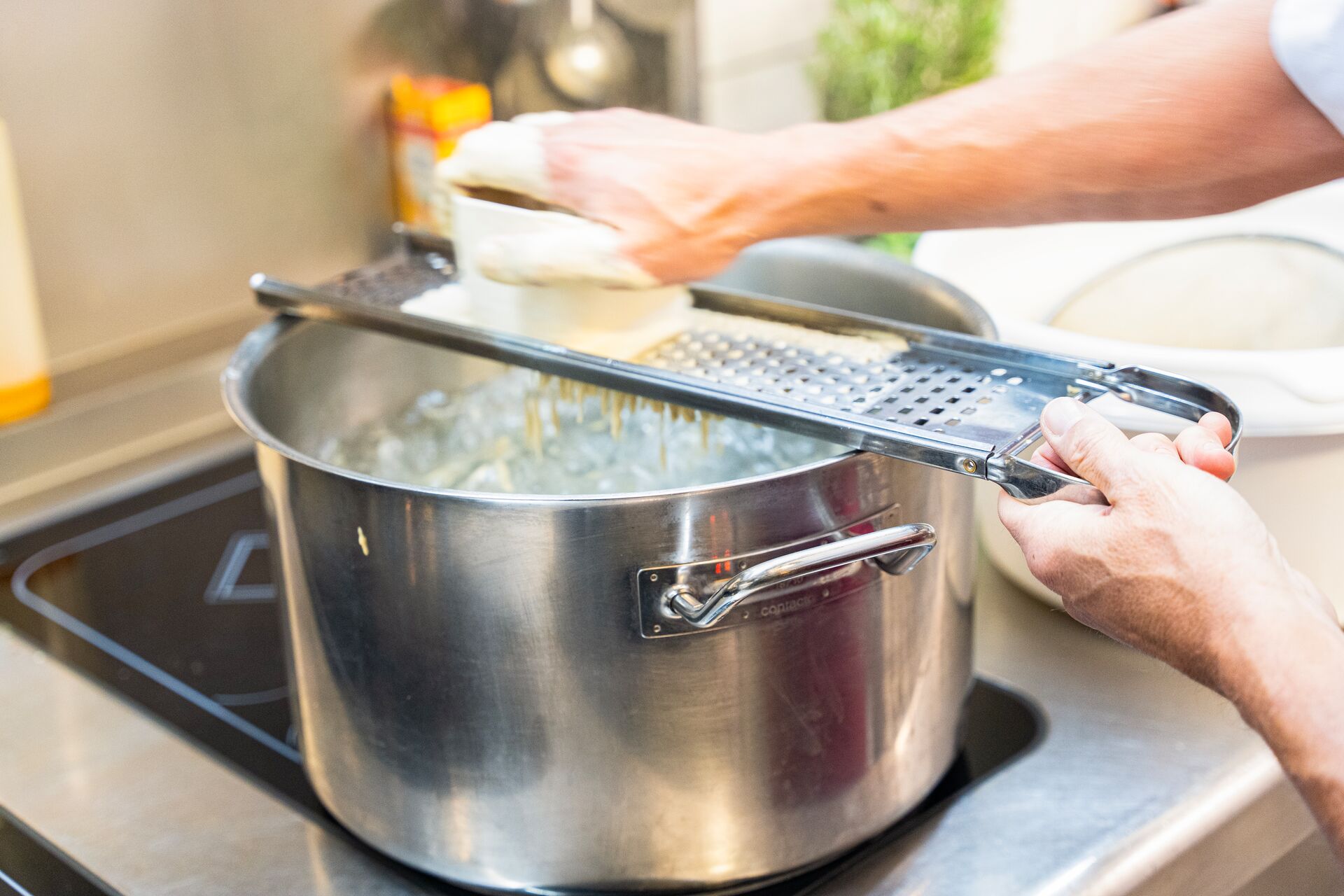
Spätzle - A traditional German noodle, is a cherished component of the country's culinary heritage, particularly in the southern regions. These soft egg noodles or dumplings are made from a simple batter of eggs, flour, salt, and often a bit of water or milk to achieve the desired consistency. The batter is then either scraped off a wooden board or pressed through a Spätzle maker directly into boiling water, where the noodles cook until they float to the surface, indicating they're done.
Why You Should Try Spätzle in Germany
Spätzle is important to German cuisine for the simplicity and the heartiness that make it a versatile side dish to complement a variety of main courses, from rich meat stews like Rouladen or Sauerbraten to vegetarian dishes. It can also be served as a main dish, either plain or mixed with savory ingredients like cheese (resulting in the dish Käsespätzle), fried onions, and herbs. Additionally, Spätzle carries cultural significance, embodying the tradition and homey comfort of German cooking. Its presence on the table brings a sense of nostalgia and regional pride, especially in areas where the recipe has been passed down through generations.
Fast Food to try in Germany
Fast food probably isn’t the first thing that comes to mind when it comes to sampling German cuisine. But picking up a pretzel or bratwurst from a street food stand can be a quick and inexpensive way to experience a few local specialties. And if you’re in the mood for something a little different be sure to try a Doner Kebab!
Doner Kebab (Donerbuden) - This Turkish-inspired thinly sliced meat is similar to what Americans call a “gyro” and is served with lettuce, onion, cucumber, and tomatoes on flat pita bread. Kebabs are sold at food carts in every major German city, and are so popular they outsell all other types of fast food combined!
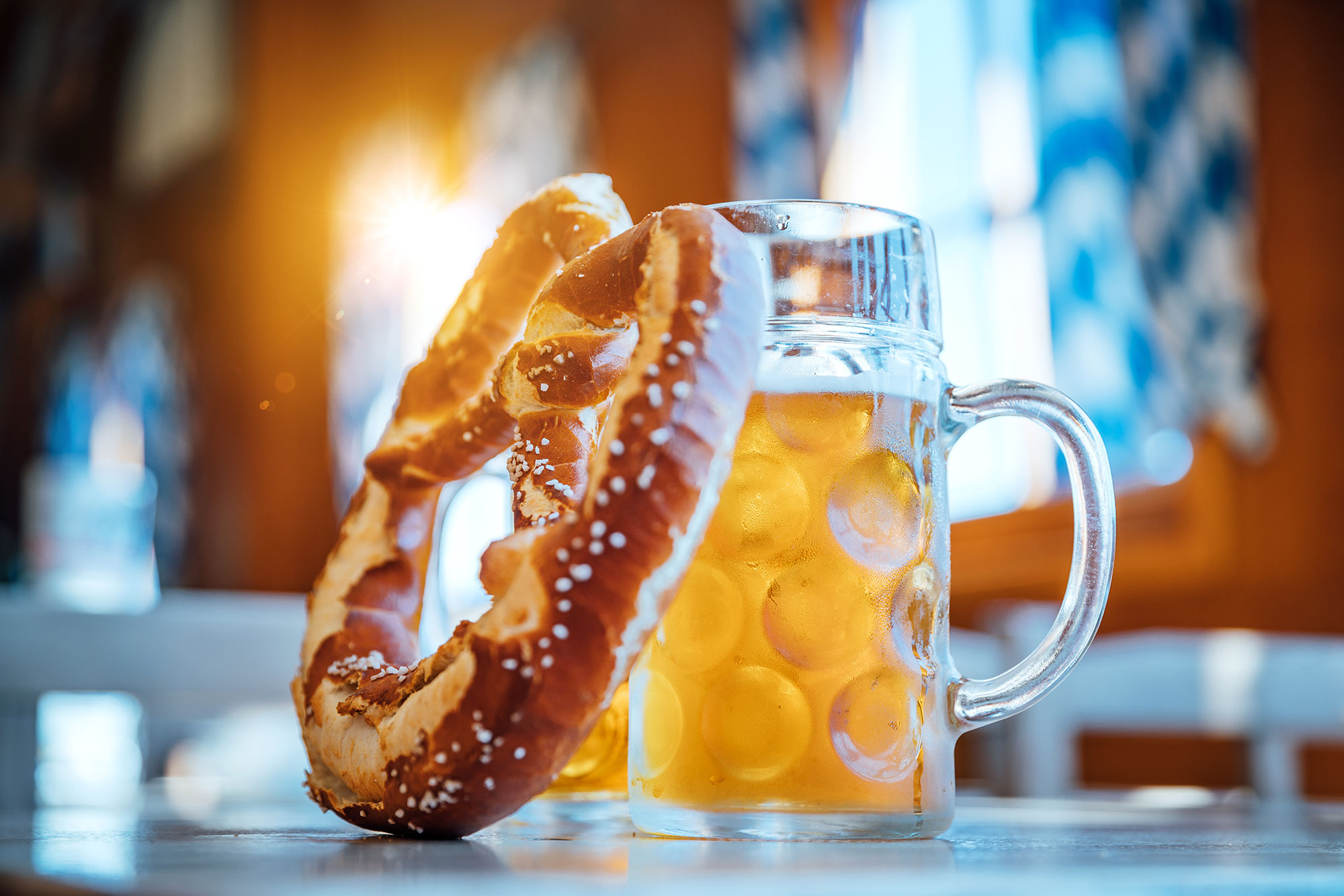
Pretzel (Brezel) - In Germany, the pretzel (or "Brezel" as it's locally known) stands as a quintessential snack and a beloved fast food option, deeply rooted in the country's culinary tradition. Unlike the soft, buttery version often found in American malls, the German pretzel is characterized by its distinctive twisted shape, crunchy golden crust, and a soft, chewy interior, with a touch of salt sprinkled on top.
Why You Should Try a Pretzel in Germany
This savory treat is ubiquitous across Germany, available from street vendors, at bakeries, and in beer gardens, making it an ideal on-the-go snack for locals and tourists alike. Its versatility is also notable; pretzels can be enjoyed plain, sliced horizontally and slathered with butter (a traditional Bavarian way to eat them), or as an accompaniment to sausages and mustard. Beyond its role as a quick snack, the pretzel is a symbol of German food culture, embodying a sense of communal dining and the simple pleasures of life. Its omnipresence at festivals, especially Oktoberfest, and in daily life, underscores its status as more than just fast food—it's a cultural icon.
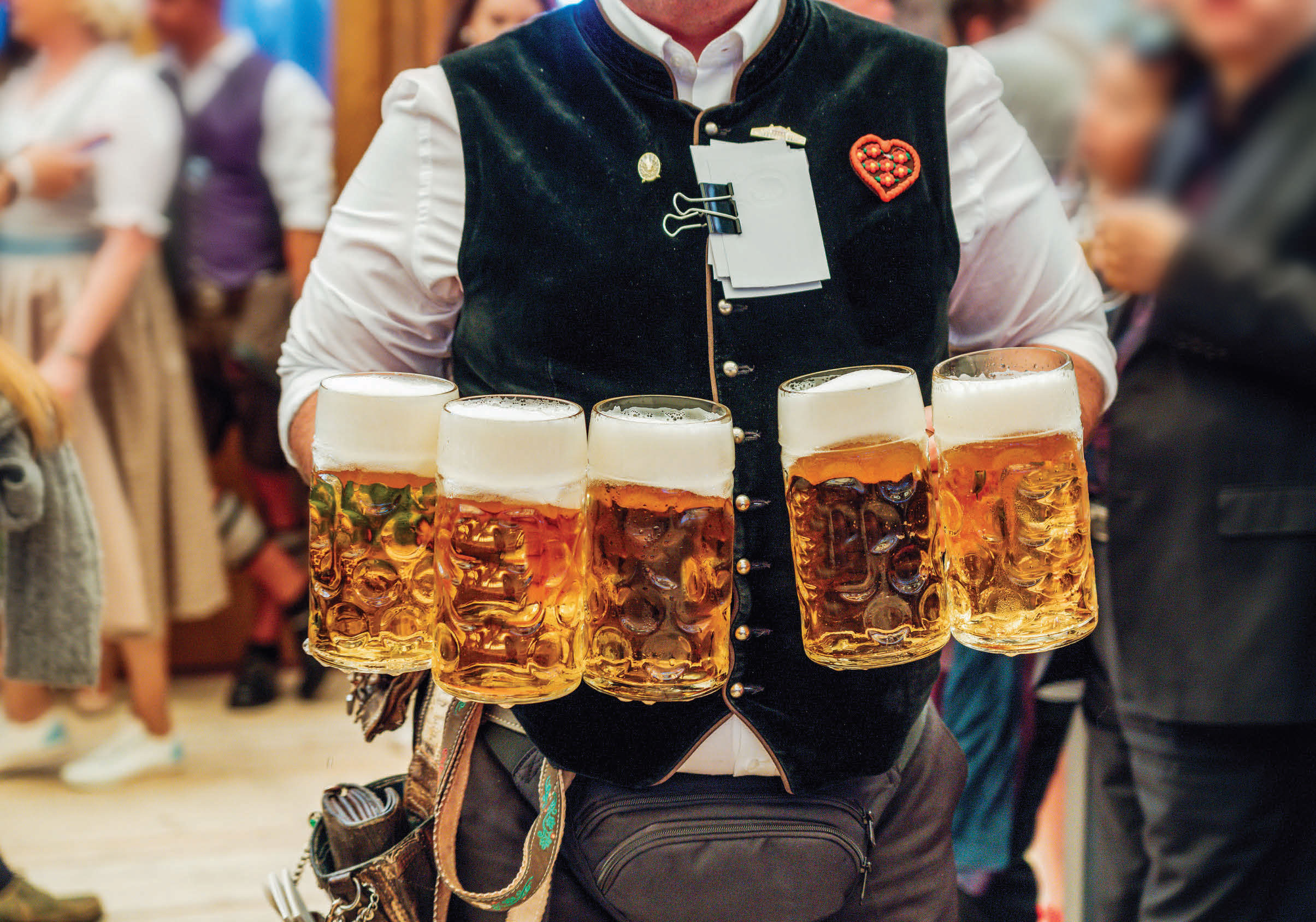
Sampling Beer in Germany
Germany's beer culture is renowned worldwide, steeped in tradition, variety, and strict brewing standards, notably the Reinheitsgebot, or German Beer Purity Law. As you journey through Germany, sampling its beers is not just about tasting; it's about experiencing a piece of German heritage.
Varieties of German Beer You Should Try
Pilsner - A Pilsner is a type of pale lager that offers a crisp, refreshing taste with a slightly bitter finish. Originating from the Bohemian city of Pilsen, it's become one of the most popular beer styles in Germany, known for its clear, golden color and fine, frothy head.
Weissbier (Wheat Beer) - Weissbier, also known as Weizenbier, is a cloudy, unfiltered beer made with a significant proportion of wheat to barley. It's characterized by its fruity and spicy flavors, derived from the yeast, with notes of banana and clove being particularly prominent.
Dunkel - Dunkel, meaning 'dark' in German, is a traditional Munich-style lager. It boasts a deep amber to dark brown color, offering a smooth, malty flavor with hints of chocolate and caramel. Despite its darker color, Dunkel is not overly heavy, making it a pleasantly drinkable beer.
Altbier - Altbier, which translates to "old beer," is a style native to the Rhineland, particularly Düsseldorf. It's a top-fermented beer that combines the crispness of a lager with the depth of an ale. Altbiers are known for their rich, copper color and balanced, hoppy bitterness.
Kölsch - Exclusively brewed in Cologne, Kölsch is a light, refreshing ale that's fermented at warmer temperatures but conditioned at cooler ones, similar to a lager. It's served in a tall, slender glass called a "Stange," and is known for its bright, clear appearance and smooth, clean taste.
Rauchbier - Rauchbier, or "smoke beer," hails from Bamberg in Franconia. This distinctive beer gets its characteristic smoky flavor from malted barley dried over an open flame. The resulting brew offers a unique combination of smokiness with the traditional richness of a German lager.
Bock - Bock is a strong lager of German origin, varying from light to dark and everything in between. Traditional Bocks are sweet, relatively strong (6-7% alcohol by volume), and malt-forward, with minimal hop flavor. It's a style that's often associated with special occasions and seasonal festivities.
Why You Should Try These Beers in Germany
Sampling these beers in Germany offers a taste journey through the country's regions and history. Each variety not only represents a style of brewing but also reflects the local culture and tradition from which it originates. So, when you're in Germany, grab a glass of your chosen brew, raise it high, and join in the communal cheer of "Prost!"
Desserts & Sweets to Try in Germany
The food may be heavy at times but you won’t want to skip dessert!
Black Forest Cake (Schwarzwälder Kirschtorte) - This world-famous cake is a decadent combination of chocolate sponge cake, whipped cream, cherries, and a generous amount of Kirschwasser (cherry schnapps). Its layers are a testament to the rich flavors and craftsmanship of German baking.
Apple Strudel (Apfelstrudel) - A popular pastry in southern Germany, particularly Bavaria, Apfelstrudel is made from thin, flaky dough wrapped around a filling of tart apples, sugar, cinnamon, raisins, and breadcrumbs. Served warm, often with vanilla sauce or ice cream, it's a comforting treat.
Stollen - Stollen is a traditional German Christmas bread dotted with dried fruits, nuts, and spices, and usually coated with powdered sugar or icing. It's dense, moist, and aromatic, with a marzipan center in some variations.
Marzipan - Lübeck, a city in northern Germany, is renowned for its marzipan, a sweet confection made from almond meal and sugar. Marzipan is often shaped into fruits, animals, or other figures, and sometimes covered in chocolate.
Baumkuchen - Known as "tree cake" for its distinctive rings that resemble tree rings when sliced, Baumkuchen is made by layering batter on a rotating spit, resulting in a cake that's both beautiful and delicious. It's often glazed with chocolate or sugar icing.

To explore our collection of guided tours of Germany, click here.
Lebkuchen - Often referred to as German gingerbread, Lebkuchen comes in many shapes and sizes, from soft, cake-like textures to more biscuit-like forms. These spiced cookies are a staple during the Christmas season, flavored with honey, nuts, and a blend of spices.
These sweets not only satisfy the palate but also offer a glimpse into Germany's rich culinary traditions and regional specialties. Whether you're enjoying a slice of Black Forest Cake in a cozy café or savoring a piece of Stollen during the festive season, each sweet treat tells a story of German culture and craftsmanship.
Why You Should Take a Tour of Germany
Opting for a guided tour to explore German cuisine and beer is an excellent choice for those looking to dive deep into the rich tapestry of flavors and traditions that Germany has to offer. Such tours are meticulously curated to showcase the best of local culinary delights, from hearty dishes and exquisite pastries to the wide array of beers brewed with centuries-old techniques. With the expertise of local guides, you're not just tasting; you're gaining insights into the history, culture, and regional variations that make German cuisine unique. They provide access to hidden gems and authentic experiences that might otherwise be missed, such as dining in centuries-old breweries or sampling specialties in off-the-beaten-path locales. Furthermore, guided tours offer the convenience of a well-planned itinerary, allowing you to immerse yourself fully in the culinary adventure without the hassle of logistics. Whether you're a food enthusiast eager to explore Germany's culinary diversity or a casual traveler looking to enrich your experience, a guided tour is a gateway to unforgettable tastes, stories, and connections.







